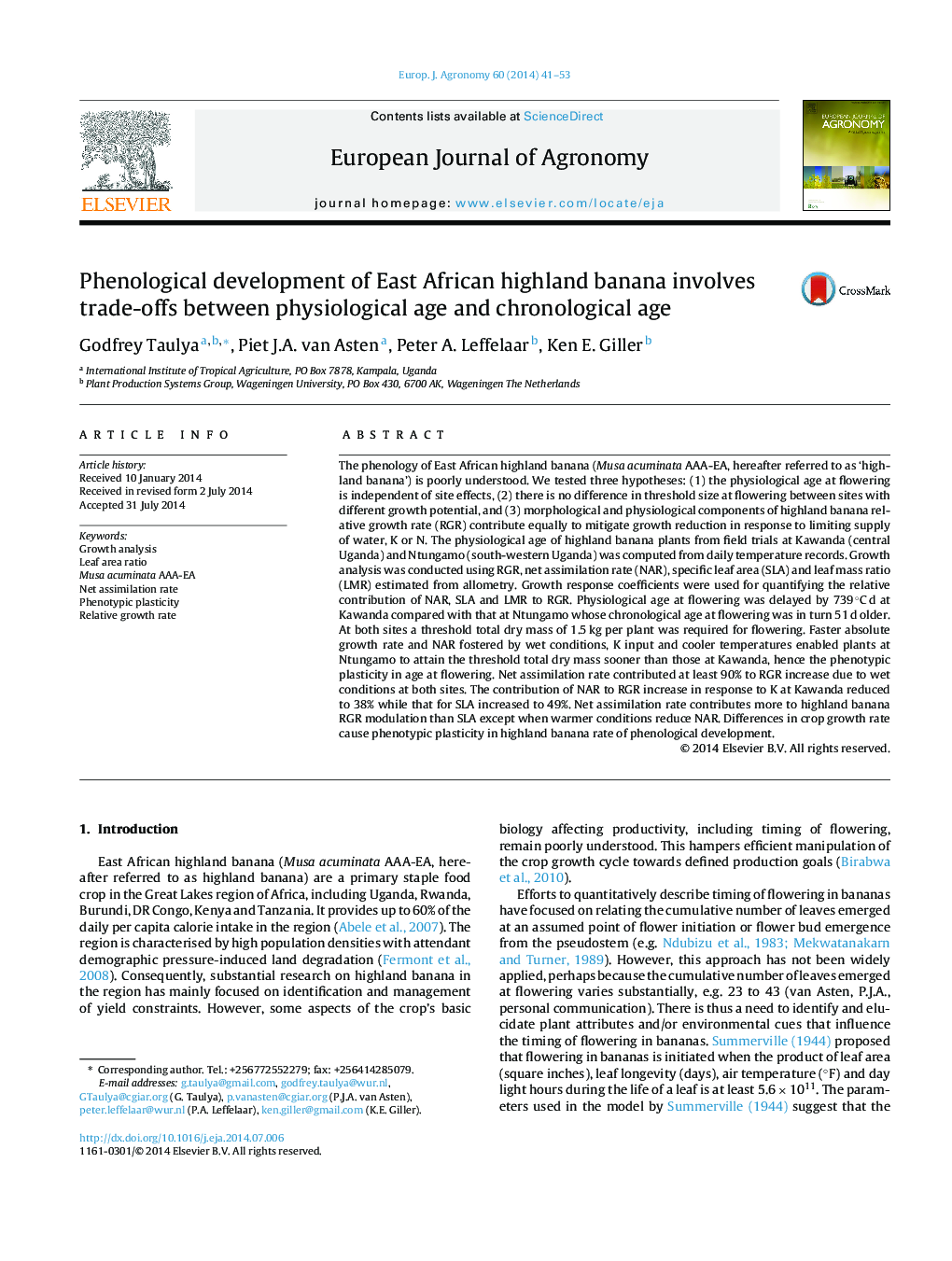| کد مقاله | کد نشریه | سال انتشار | مقاله انگلیسی | نسخه تمام متن |
|---|---|---|---|---|
| 4508876 | 1624465 | 2014 | 13 صفحه PDF | دانلود رایگان |
• The threshold total dry mass for bananas’ flowering is 1.5 kg per plant.
• Net assimilation rate (NAR) drives relative growth rate in response to water and K.
• Specific leaf area supersedes NAR in response to K above air temperature of 22 °C.
The phenology of East African highland banana (Musa acuminata AAA-EA, hereafter referred to as ‘highland banana’) is poorly understood. We tested three hypotheses: (1) the physiological age at flowering is independent of site effects, (2) there is no difference in threshold size at flowering between sites with different growth potential, and (3) morphological and physiological components of highland banana relative growth rate (RGR) contribute equally to mitigate growth reduction in response to limiting supply of water, K or N. The physiological age of highland banana plants from field trials at Kawanda (central Uganda) and Ntungamo (south-western Uganda) was computed from daily temperature records. Growth analysis was conducted using RGR, net assimilation rate (NAR), specific leaf area (SLA) and leaf mass ratio (LMR) estimated from allometry. Growth response coefficients were used for quantifying the relative contribution of NAR, SLA and LMR to RGR. Physiological age at flowering was delayed by 739 °C d at Kawanda compared with that at Ntungamo whose chronological age at flowering was in turn 51 d older. At both sites a threshold total dry mass of 1.5 kg per plant was required for flowering. Faster absolute growth rate and NAR fostered by wet conditions, K input and cooler temperatures enabled plants at Ntungamo to attain the threshold total dry mass sooner than those at Kawanda, hence the phenotypic plasticity in age at flowering. Net assimilation rate contributed at least 90% to RGR increase due to wet conditions at both sites. The contribution of NAR to RGR increase in response to K at Kawanda reduced to 38% while that for SLA increased to 49%. Net assimilation rate contributes more to highland banana RGR modulation than SLA except when warmer conditions reduce NAR. Differences in crop growth rate cause phenotypic plasticity in highland banana rate of phenological development.
Journal: European Journal of Agronomy - Volume 60, October 2014, Pages 41–53
